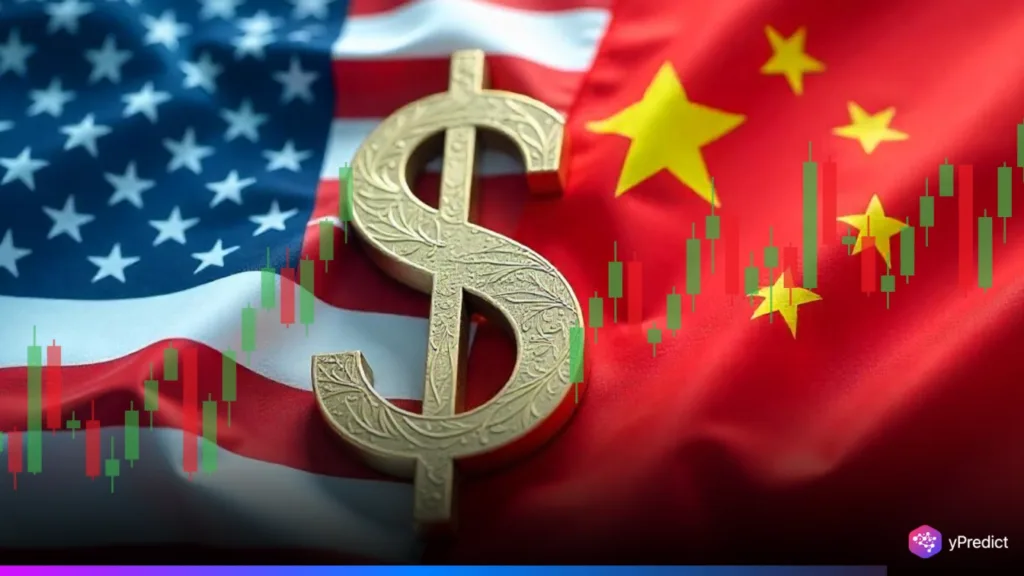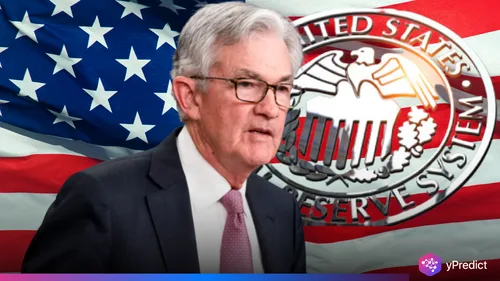
The U.S. dollar gained on Tuesday following a breakthrough in trade talks between Washington and Beijing. Both countries agreed to a 90-day reduction in tariffs, easing fears of a global slowdown and boosting investor confidence. Under the deal, the U.S. will cut tariffs on $200 billion in Chinese goods from 145% to 30%, while China will lower its duties on U.S. imports from 125% to 10%.
The agreement marks a significant step toward resolving the prolonged trade dispute between the world’s two largest economies. Market optimism pushed the dollar to near one-month highs, reflecting renewed hope for stability in global trade.
Dollar Index Gains as Safe-Haven Demand Eases
The US dollar gained sharply as investors welcomed a breakthrough in trade talks between the U.S and China. This ease resulted in the temporary suspension of aggressive tariffs. The 90-day trade agreement involves a reduction of US tariffs on Chinese imports from 145% to 30%, while China reduced its levies on American goods from 125% to 10%.
However, China continues to face a 20% fentanyl-related tariff. Despite expectations for little progress, the scope of this de-escalation exceeded market expectations, sparking a global relief rally in both equities and currency markets.
The agreement caused a global market rally, with the U.S. Dollar Index (DXY), which monitors the dollar against six major currencies, climbing to 101.91, up 1.5%. This was its sharpest one-day rise since early November. Simultaneously, the euro fell 1.54% to $1.1074, as the yen sank past 152 per dollar, approaching multidecade lows. The EUR/USD pair also battled near its monthly low, highlighting the dollar’s resilience.
This fresh momentum renewed investor confidence in the dollar occurred as market sentiments shifted away from traditional safe-haven currencies such as the Japanese yen and the Swiss franc. The move indicates an increasing optimism that reducing trade tensions will boost global GDP prospects in the future. Analysts believe that lessened geopolitical and trade uncertainties will maintain the dollar’s strength in the short run.
Yuan Soars to Six-Month High After the Shift
China’s onshore yuan rose beyond 7.20 against the US dollar, marking a six-month high after the People’s Bank of China set a higher daily midpoint. The action signalled policy support as US-China trade tensions eased and Beijing increased efforts to attract capital inflows and stabilise the currency, to reduce import-driven inflation and strengthen post-pandemic recovery.
Improved sentiment supported other developing market currencies as investors responded to lower global risk. OCBC Bank economists stated that capital flows are more likely to continue when major economies de-escalate trade tensions, however, long-term structural difficulties remain.
Meanwhile, the euro and Japanese yen partially rebounded after sharp losses triggered by the dollar’s earlier surge. The yen appreciated by 0.48% to trade at 147.76 per dollar, recovering from a more than 2% drop the day before. The euro also edged higher, gaining 0.25% to reach $1.1114 after a steep overnight decline of 1.4%.
Short-Term Truce, Long-Term Uncertainty
Despite the improved momentum, global investors remain cautious. The 90-day tariff pause calls into doubt the long-term trend of trade policy. The agreement did not address underlying problems like technology transfers, intellectual property rights, or export controls, which have previously stalled negotiations.
Meanwhile, central banks around the world are paying careful attention. A higher dollar could complicate monetary policy for emerging markets that rely on dollar-denominated debt. And while China’s currency has gained, additional gains may be limited if trade talks stall again.







